This has been a pretty interesting exercise. I’ve been looking lately at what the top tea producers in the world are. There are more and more tea plantations opening all the time and in so many different countries now it’s actually getting harder for the industry to keep up.
So where is tea grown? Countries like China, India, and Sri Lanka, whilst still the backbone of tea manufacturing, are no longer the only tea-producing countries. Production has spread to many areas of the globe, here’s the complete list, with a map included at the end for quick reference.
What used to be the reserve of equatorial and historically known areas like India, China, and Sri Lanka, is spreading further afield, as companies realize that actually, tea will grow in their part of the world too.
Let’s not be fooled by this either. Tea is a big business and it’s growing. So naturally, more companies want to get involved.
In truth, what I’ve found is that people and organizations represent the ‘Top List’ of countries differently. It all depends on how you want to look at the numbers – and we all know that statistics can be made to mean whatever you want them to mean, right?
Although, it’s not down to malicious manipulation, it’s mainly down to what statistics you want to see and based on what metrics.
For example, some organizations want to understand Tea export figures, others want to know tea production, some on consumed quantity, and others on output per capita, etc.
So you can see where the lines start to become blurred if we start to compare lists, and sadly, there isn’t one list that covers all countries for one statistic
Nonetheless, I’ve dug deep to find out all the information I can about the current tea growing countries and compiled what I think to be a pretty accurate top tea producing nations list. I’ve also added what I can find out about each country so far.
Those listed are known to have at least one tea plantation and where possible I’ve added any other useful data I can find. Much of the data on Tonnage per annum comes from sifting through various reports – courtesy of Actualitix.
I hope you enjoy the list, so here we go, starting with our top 10…
Top 10 Global Tea Producers
01. China – 1,939,457 Tons
With tea production at around 1,939,457 tons, some list China, and some list India as being first. Either way the numbers are fairly close, but I edge China in front based purely on their production quantities.
Also, there’s no ignoring the diversity of Tea produced here. Even though China produces mostly green teas 68%, it also produces vast quantities of other types too, such as, black, green, oolong and pu-erh.
Arguably the birthplace of tea. Originally for medicinal purposes and with records of tea production and consumption stretching back thousands of years. It’s only since 618 tea was drank as a stimulant as well.
China is also home to the historic Great Horse Tea Roads that snaked their way through China to Tibet and beyond.
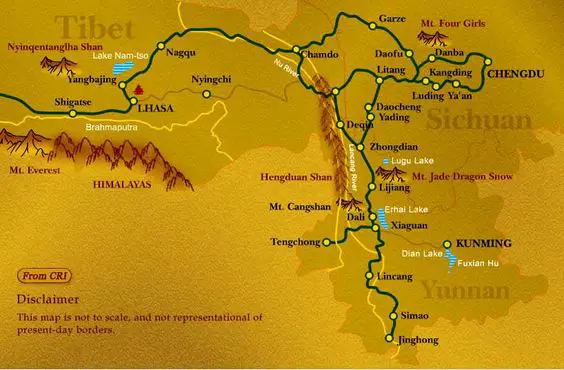
There are a number of heavy tea producing Provinces in China. Most notable being Yunnan, Fujian, Zhejiang, Sichuan, Hubei, Hunan and Anhui Provinces.
02. India – 1,208,780 Tons
Producing around 1,208,780 tons a year. The second-largest producer of tea. India has been growing tea since 1823.
Famous for its Darjeeling and Assam amongst other areas, which together form the largest single region for growing tea in the world.
Main tea growing regions are; Assam, Darjeeling, Dooars, Dooars, and Ceylon-type teas.
Mainly producing black and green tea, hand picked, semi hand-picked and machine picked.
03. Kenya – 432,400 Tons
The third largest producer of tea in the world and the largest tea producer in Africa is Kenya. Here, tea is one of the staple industries of the entire country, taking up a large chunk of land, around 110,000 hectares.
Kenya has been producing tea since 1903 When it was introduced by a colonial settler called G.W.Caine. They now produce around 432,400 tons per year.
Production centers mainly around the foothills of Mount Kenya at around 6500-800 feet altitude. And, on the shores of Lake Victoria near the borders of Uganda and Tanzania.
Also, from Nairobi, north, and west through Limuru and Kericho to name a couple of large estates. Half of the tea consumed in the UK comes from Kenya!
Almost all of Kenya’s tea production is based on machine processed (CTC) and is mostly strong black tea. Although larger manufacturers do pre-order quantities of Green, White and Oolong.
For more information on the methods of manufacture see my other article on How Tea is Made.
04. Sri Lanka – 340,230 Tons
Tea has been grown throughout the island since 1860. But mainly grown in the mountain ranges to the south. Sri Lanka has become the fourth largest producer of tea globally producing up to 340,230 tons per year.
Trademarks are held by the Sri Lanka Tea board for a number of high-grade tea regions such as Nuwara-Eliya, Uva, and Kandy. With other areas producing darker-grade teas. Both areas use orthodox and CTC methods for manufacturing.
05. Vietnam – 214,300 Tons
Rekindling its love for tea growing, Vietnam has begun to grow tea again – in growing quantities. Tea was last grown in any great quantity before the Vietnam war, the recovery has been slow and steady.
Producing mainly black and green teas similar to those found in China. Plantations are positioned around the higher altitude in the North and Central mountainous areas where growing conditions are ideal. It shows too, they’re making good progress and now lying in fifth position globally.
06. Turkey – 212,400 Tons
That’s right, Turkey ranks number six on the list with 212,400 output. The Rize province of Turkey in the North East houses the most tea production estates. Stretching over to the border with Georgia and the coast of the Black Sea.
As a major tea drinking nation themselves, Turkey consumes most of its own tea production per year within its own borders as domestic consumption!
07. Iran – 160,000 Tons
Weighing in at 7th globally, Iran has been growing and harvesting tea since the turn of the 20th century. Although as a big tea-drinking nation Iran produces tea mainly to satisfy their large internal market of mainly black, orthodox, and some CTC varieties.
If you go looking for the plantations, you’ll find them clustered around the south Caspian sea and on the slopes of the Elburz mountain range.
08. Indonesia – 148,100 Tons
Currently, the 8th largest producer of tea globally, producing mainly black and green tea, along with some orthodox and CTC varieties. Producing tea since way back in 1782. Although quality can vary depending on the time of year.
09. Argentina – 105,000 Tons
Argentina is proud to be the largest tea producer in South America. Harvesting great volumes of tea since 1951 mainly for blending purposes.
Most tea plantations are situated along the border to Brazil. Holding 9th position, hard to ascertain if this includes the growing of Yerba Mate plantations alongside them too – which is the countries main beverage of choice.
10. Japan – 84,800 Tons
With their famous green tea and sencha who would have thought that Japan would lie tenth in line on the tea world scale? Naturally, their harvest is mostly green tea and is mainly machine harvested.
Their most notable tea-growing regions, include Shizuoka Prefecture, Kagoshima Prefecture, Mie Prefecture, Kyoto Prefecture, Miyazaki Prefecture, and Fukuoka Prefecture. With Shizuoka being the most prominent green tea producer.
Well, that’s our Top Ten so far. Here’s our next section containing the top 11-20 tea-producing countries
Top 11-20 Global Tea Producers
11. Thailand – 75,000 Tons
Thailand’s heartland for tea producing is the region around Chiang Mai and Chiang Rai to the North. Earning them a respectable 11th position globally and hot on the heels of Japanese output.
12. Bangladesh – 64,000 Tons
Bangladesh is quite youthful in tea growing circles, growing and harvesting tea since 1947 they’ve gained a respectable position in global output.
You’ll find most of their plantations in the North East area of Sylhet and around the city of Chittagong producing black tea for the most part.
Don’t expect much tea to come your way though, like Iran, most of their plantations serve to produce tea for national consumption.
13. Malawi – 54,000 Tons
Since 1805, Malawi has become a notable producer of more specialty teas emanating out of the Satemwa Tea Estate.
Most of their plantations produce black tea and are located in the northern and southern regions of the country.
14. Uganda – 53,000 Tons
Close behind Malawi is Uganda as the fourteenth largest producer of tea globally. Producing black tea since 1909, then producing it commercially in the 1930s.
Political instability meant that during the 1970s the production of tea – which was comparable to Kenya (currently in the fifth position) dropped considerably – along with quality.
15. Burundi – 41,817 Tons
Weighing in at the 15th, Burundi produces a whopping 41,817 tons. Which when considering the size of the country is no mean feat.
16. Tanzania – 33,700 Tons
Tanzania started tea production in 1905, shortly before Uganda. Now, most of their black tea is produced out of the Usambara Mountains and in the highlands to the south.
17. Myanmar (Formerly Burma) – 31,700 Tons
Formerly Burma, Myanmar is currently the seventeenth largest producer of tea in the world. Believed to be mainly black and CTC varieties for commercial use.
18. Mozambique – 23,000 Tons
Producing tea since 1920, Mozambique is the eighteenth largest producer of tea globally with a respectable 23,000 tons of mainly black CTC tea.
19. Rwanda – 22,185 Tons
Rwanda is fairly on a par with its neighbour Burundi, but enjoys similar growing conditions to that of Uganda.
Producing mainly black tea since 1950 and to some degree having been affected only by political and military unrest. It currently sits at nineteenth in the world.
20. Nepal – 20,588 Tons
A specialty, producing tea in the region East of Nepal, almost exactly next to Darjeeling. Nepal black teas are most notable for being similar to Darjeeling teas. They also produce a small quantity of green tea.
That completes our top 20, if that’s not enough, then let’s head into our next range of global tea producers.
Top 21-47 Global Tea Producers
21. Zimbabwe – 19,000 Tons
Zimbabwe, on the borders with Mozambique, produces mainly Black CTC teas. Sitting at the twenty-first largest producer globally. Mainly around the regions of Inyanga and Chipinga
22. Malaysia – 18,377 Tons
Malaysia houses the largest tea plantation in all of Southeast Asia, the Boh Tea Plantation in the Cameron Highlands produces a vast quantity of the nation’s output.
23. Taiwan – 15,000 Tons
Although Taiwan production has all but halved in the last 50 years. They’re most well known for their Oolong Teas. Tea is grown across the entire island from East to West
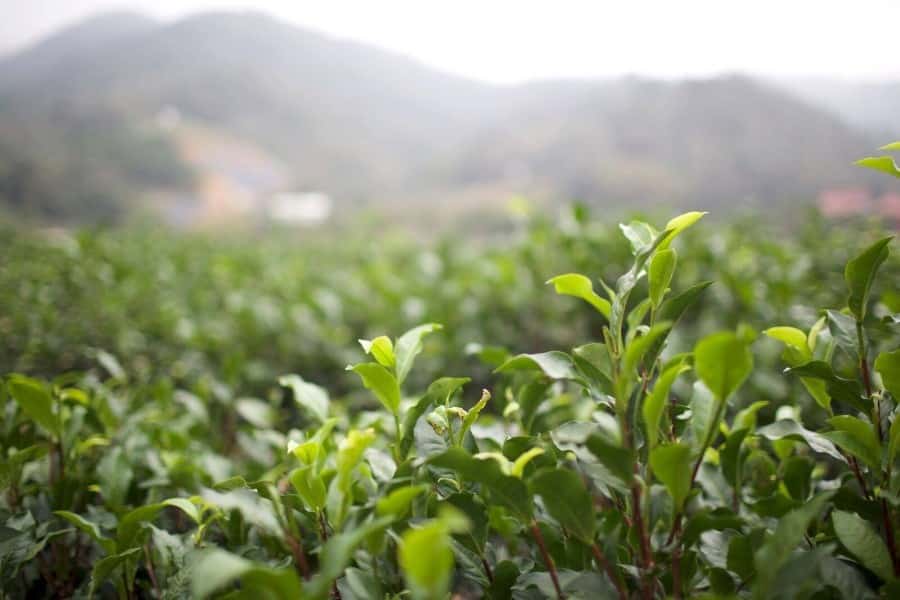
24. Ethiopia – 7,400 Tons
Despite immense difficulties with famine in the last 50 years or so, Ethiopia still boasts 24th position in the tea growing hierarchy.
25. Papua New Guinea – 4,700 Tons
Being a recent tea adopter in global terms, Papua New Guinea has been quietly growing tea since 1964. Concentrated in the western highlands and is well known for producing quite a bitter-tasting black tea.
26. Cameroon – 4,700 Tons
Producing tea since 1914, Cameroon is the twenty-sixth largest producer globally of tea, mainly black tea. Known for producing a very aromatic tea with minimal tannins.
27. Peru – 4,319 Tons
Peru is the twenty-seventh largest producer of tea globally. Mainly Black tea CTC.
28. Georgia – 3,300 Tons
I should probably point out that this is Georgia in far Eastern Europe, not the US. State. They’ve been growing mostly Chinese varieties of black teas along the coast of the black sea since 1847. Like Cameroon, it’s a lighter-colored tea, with low tannin content
29. South Korea – 3,200 Tons
This amount of tonnage is still not small fry. South Korea still makes it into the top 30 with 3,200 tons per annum.
30. Ecuador – 3,000 Tons
Situated mainly around Te Sangay, at three thousand tons Ecuador is the thirtieth largest producer of tea.
31. Congo – 2,900 Tons
As is accustomed to this region alongside its neighbors Tanzania, Burundi, Uganda, and Rwanda. Congo is the thirty-first largest producer.
32. Mauritius – 1,536 Tons
At around fifteen hundred tons, Mauritius is the thirty-second largest grower of tea in the world.
33. Bolivia – 1,374 Tons
Bolivia is the thirty-third largest producer of tea globally
34. Laos – 900 Tons
This small nation, Laos keeps within the top 50 producers of tea in thirty-fourth place globally.
35. South Africa – 900 Tons
A modest output of tea since 1877. Focussed on the areas of Kwazulu, West Transvaal, Transkei, Natal, and Zululand. Most notable for its production of Rooibos. But also their black tea production is almost all produced for national consumption.
36. Zambia – 900 Tons
It had to produce at least some tea to keep up with its neighbors. Coming in at nine hundred tons per annum.
37. Brazil – 763 Tons
Brazil is the thirty-seventh largest producer of tea in the world. I can only presume this does not include their huge appetite for Yerba Mate.
38. Madagascar – 600 Tons
Thirty-eighth largest producer of tea in the world.
39. Azerbaijan – 568 Tons
Azerbaijan is thirty-ninth on the list of top tea producers globally.
40. Guatemala – 510 Tons
Just making it into the top forty, but without a few remaining nations that can overtake it. Guatemala produces five hundred tons per annum.
Details can sometimes be limited for those outside the top forty without any real focus being on tea production statistics.
41. Panama – 170 Tons
Number forty-one is Panama. With a small but consistent output.
42. Mali – 150 Tons
Mali is at forty-second. No further info on this.
43. Portugal – 140 Tons
Portugal’s most notable tea plantation, operating since 1883 is Cha Gorreana based on the island of S.Miguel.
44. Colombia – 125 Tons
It’s not just coffee Colombia produce, they’re known for specialty tea, mainly produced on the Bitaco Tea Estate.
45. Montenegro – 100 Tons
A modest one-hundred-ton mark was produced by Montenegro, placing them at the forty-fifth position.
46. Russia – 90 Tons
Around 1994 Russia was producing 8,481 tons per annum, this has now reduced to just 90 tons. Making them now forty-sixth on the list.
47. Seychelles – 42 Tons
A big production quantity for such a small island. Seychelles is the forty-seventh on the list of global tea production.
At this point we begin to get down to those nations with a small output of fewer than 40 tons, some of them new to the tea-growing sector and all worthy of mention.
So here are the remaining 15 on the list, as honorary mentions, with production below 40 tons per annum.
Where is Tea Grown – Honorary Mentions
Australia
Surprisingly, tea has been grown in Australia since 1884 in Queensland. At present, there are a small number of commercial plantations in the states of Queensland, Victoria, and New South Wales. Tasmania is home to the most southern tea plantation in the world.
France
Réunion Island is the only area in France where you’ll find tea grown.
El Salvador
El Salvador has been growing tea in small quantities for many years.
Bhutan
Bhutan produces tea outside Trongsa. The most notorious plantation is the Samcholing Tea Estate.
Canada
Produced solely by a tea farm based on Vancouver Island called Westholme Tea Farm.
Cambodia
Consisting of minor producers based near Kirirom mountain, most of the large areas of tea plantations in Cambodia were destroyed by the Khmer Rouge.
Chile
Chile has the Salus Tea Plantation to thank for its production of tea.
Germany
Only producing tea since 2001, there’s some experimental black tea growing happening in various farms around Germany.
New Zealand
Just the one major tea plantation in New Zealand. Zealong is a producer of good quality Oolong and black teas, based around Hamilton on the north shores.
Nigeria
A number of notable tea plantations in Nigeria, one is actually owned by Liptons based in Agbara.
North Korea
Produced in just one area in South Hwanghae. It is understood that Kim II Sung ordered the tea plantations to be set up in 1982, producing a tea called Kangryong after the county in which it’s grown. Mainly production of black tea which serves the capital.
Pakistan
Tea is being produced in Pakistan, in surprisingly small quantities considering its region. The Agricultural Research Council of Pakistan claims the suited areas for growing tea are the districts of Mansehra, Swat, Battagram, and AJK.
United States
A number of small and growing tea plantations are now based in the U.S. South Carolina boasts the largest and is owned by Bigelow. However, the largest concentration of tea growers is based in Hawaii.
United Kingdom
Just outside Truro, England is the recently formed (at least in Tea history) Tregothnan tea estate, England.
Since its creation, small-operator tea farmers are also known to have started in areas of Scotland. The first is the Wee Tea Plantation. This led to the formation of the Scottish Tea Growers Association in 2016.
Sikkim (India)
This Tiny state nestled just north of India in the Himalayas and now part of India produces an aromatic tea akin to that of Darjeeling situated close by.
Image By Vikramjit Kakati – Own work, CC BY-SA 3.0,
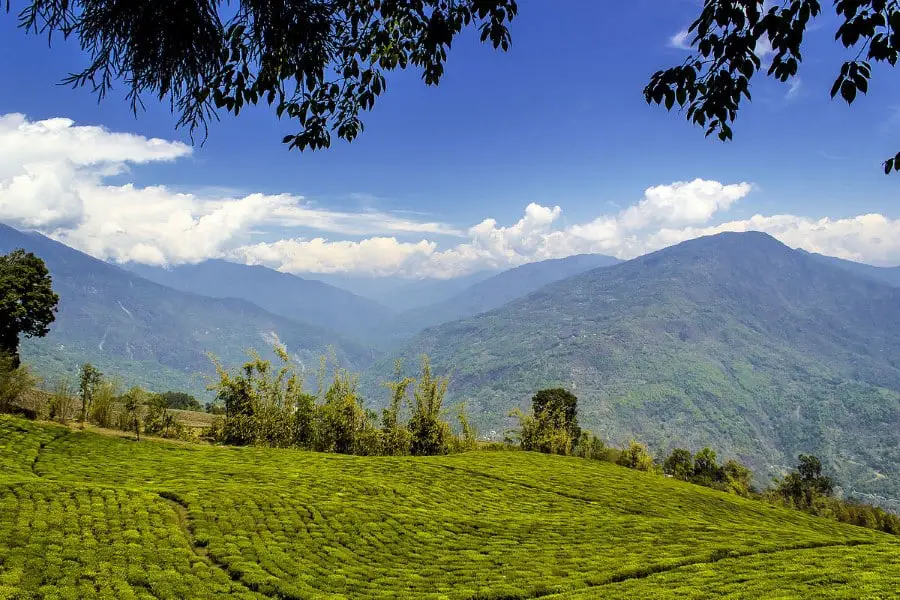
Where is Tea Grown – Closing Thoughts
Well, that’s it. The full list of the top tea-growing and producing nations in the world. It took some research to produce but I hope you found it useful. I’ll be sure to keep it updated to reflect changes. If you like it would be great if you could share it.
I also hope you get chance to check out my tea-wares page and plenty more interesting tea related articles from my homepage.
Quick Reference Map – Top 20 Tea-Producing Countries
Anyway, here’s my quick reference map showing the top 20 tea-producing countries, I hope it helps as a quick reference guide.
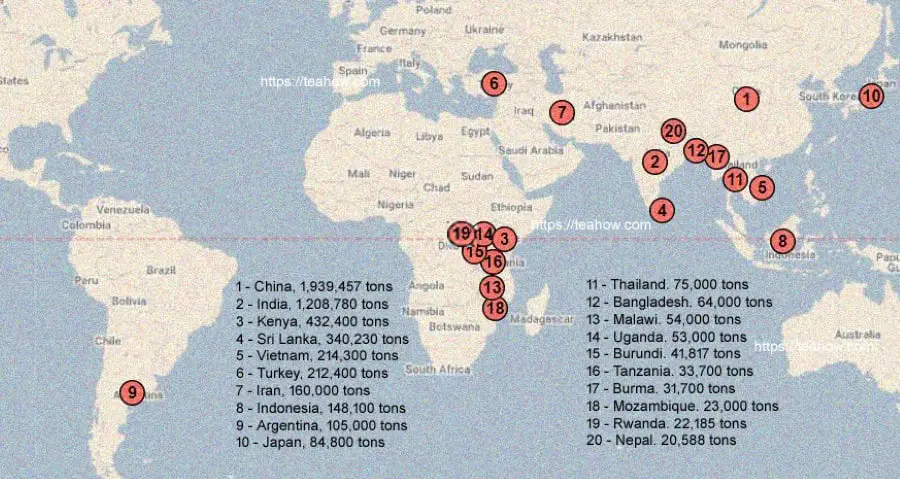
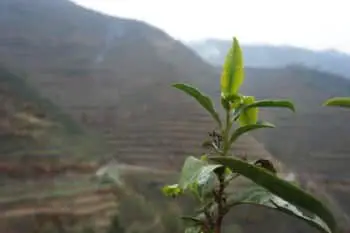
[…] brought tea to Indonesia and Sri Lanka (formerly Ceylon) to support its plans to capitalize on this lucrative crop. Interestingly, it was the Dutch and not the British, who first brought tea to Western Europe, […]
Thank you Cory, I may take you up on that 🙂
Hello Micheal, great article here. I was searching for top tea production countries and came across your site. I do a weekly tea/philosophy event I call Philosotea. If presenting some of your information or just stopping by to chat and drink sounds interesting let me know. I’d be glad to collaborate or get some feedback from a fellow tea lover!